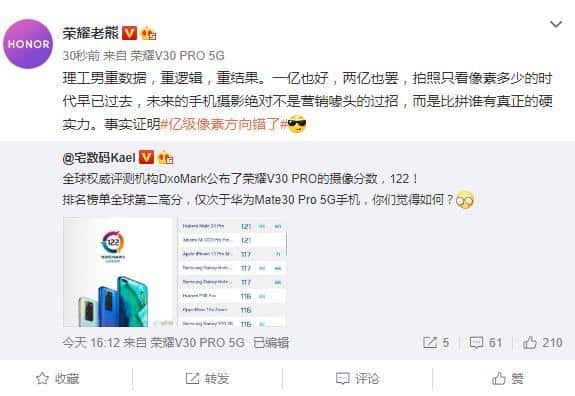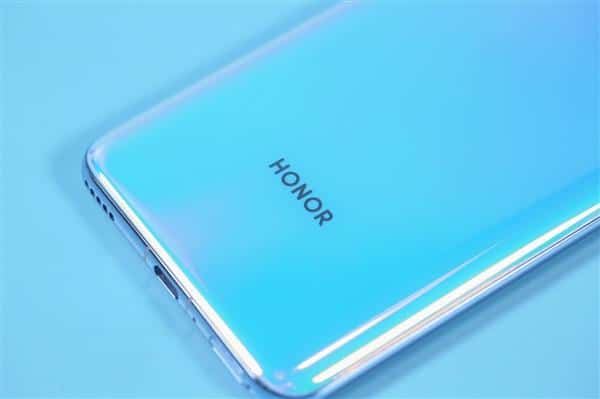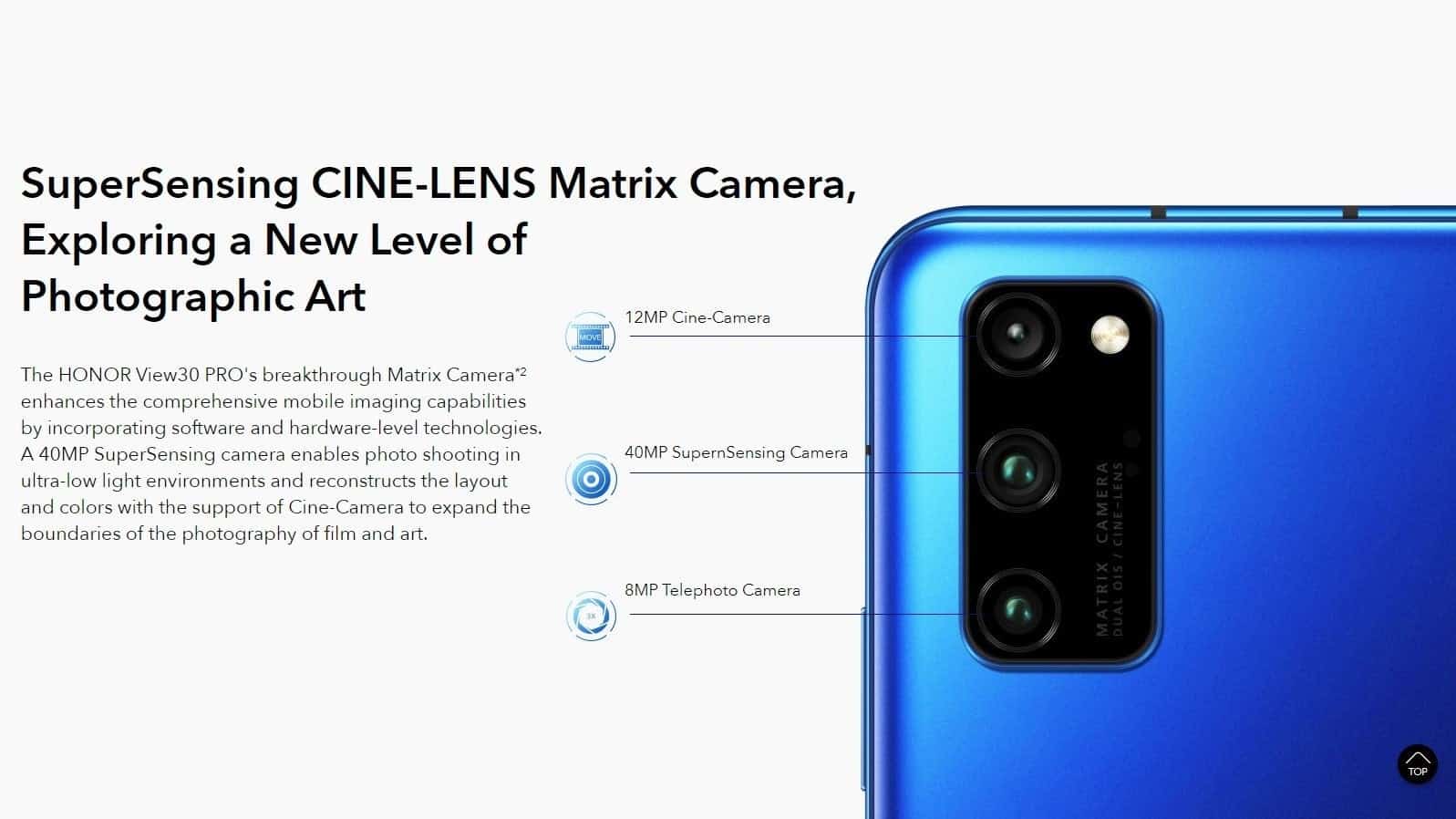Which direction will smartphone cameras go in 2020? The recent dispute between Xiaomi and Honor on having a 100MP sensor shows two different paths. Xiaomi and Samsung have chosen the way of high pixel count; while Huawei, Honor and Sony have decided that having 100MP sensors isn’t the right choice – at least for the time being.
Huawei & Honor Agree with Sony: It’s Too Early for 100MP Cameras on Phones

Honor and Huawei’s partnership with Sony does indeed suggest they have a different conception behind smartphone photography. The recent rumor about Sony producing another 100MP sensor (like Samsung) has been denied by people working at Sony. Adding that it’s too early to see this resolution on a smartphone camera sensor.
Later on, the marketing manager of Honor Mobile – Shen Kaixin – also replied about the 100MP controversy, saying that:

So, Honor believes that it’s very difficult to get larger pixels when resolutions exceed 100MP. Sony and Honor / Huawei also believe that a pixel size of more than 1um can ensure flagship-like photo quality; thus Honor will not be joining the 100MP trend in 2020. Instead, they’ll adopting sensors with larger pixel sizes.
Now, albeit this was Honor talking and not Huawei, we can safely assume the latter company will take the same path. Additionally, from previous rumors we already know the Huawei P40 Pro will pack a custom made 52MP sensor produced by Sony. This sensor will be 1/1.33 inch in size and will adopt pixel binning 4 in 1 technology. This tech allows the sensor to merge four pixels into one in order to capture more light. As you probably know, more light means less noise in photos shot where lighting isn’t optimal.
In conclusion, both Huawei and Honor might equip their flagships with 48MP or 52MP Sony sensors; leaving Samsung’s 108MP image sensors to Xiaomi and other brands.
What do you guys think about the companies’ choice? Do you agree with them? Let us know down below!






I think more is better when it comes to pixels. This would allow for a cleaner digital zoom ontop of the optical zoom that Huawei uses. On the p30 pro I can use full zoom to see clearer than I can with the naked eye at a distance. I did see they are planning to double the optical zoom distance so that should help, but not sure why they don’t want the better sensor, other than pretty much stating “it’s too good for 2020 smartphones”
It’s not just about pixels though. Sensor size is much more important for image quality. That’s why (or at least the main reason) a 20MP photo from a DSLR will look better than a 100MP photo from a smartphone. Of course, we’re talking indoors or at night.
It’s really easy to take good photos outside on a sunny day even with a smaller sensor.
Now, Samsung actually made a sensor that’s high pixel count and size, which theoretically could be better in every way, but it needs super optimized software to be so.
Why would someone like Sony and honor make this claim? There smartphone cameras are very poor as is. Samsung won in a blind test of best smartphone camera and that’s with a 12mp sensor. I sense some jealousy but until your a major contender you can’t say anything. That’s like Walmart telling Beats by Dre that the speaker doesn’t need a subwoofer with this many db of bass. Samsung is gonna kill it again this year and Sony and honor will flop, yet noone is telling Sony that a 4k screen isn’t ready for smartphones, yet they do it only to disappoint.
I guess you didn’t know Sony makes all the high end sensors for Samsung, Apple and pretty much everyone…
Sony sensors are better compared to Samsung in night as well as day time. See the camera comparison of night shot on huawei phones and Samsung phone. It is clear that pixels are not the only factor affect the quality of a photo. The software also plays a good role in optimization of photos and videos. The 108mp camera by Samsung on xiaomi note10 is very dump on night…
They aren’t, unless you dail in settings and that’s not ideal for every use who just wants a point and shoot. They make good sensor but their software sucks.
Also, pixel binning and a 1/1.3″ sensor is supposed to improve night photos significantly. If you do the math 108 divided by 9 equates 12 and results in a conventional sensor and tech that excells in night photography. The 108MP cam isn’t there for no reason, bud. Samsung are moving sway from the overreliance of software. Failing that, just use the G cam APK 🤷🏻♂️ win win.
Also, I’m not gonna ignore the fact you asserted sony’s low light photos are better the immediately use an example of a Huawei phone, which not only isn’t globally relevant or straight up relevant, that phone in question utilizes a slightly larger sensor, thus increasing the low light capabilities. That’s a huge non sequitur fallacy when you’ve actively ignored the Samsung 1/1.3” sensor that’s bigger than the aforementioned Huawei mate 30.
Again, Pixel binning effectively groups 9 pixels to act as one thus reducing the MP count to 12 if you divide 108 by 9. Pixel binning plus a 1/1.3” sensor means better low light. The full 108MP would be used for 8K and, by extension, only in daylight shots, that regardless would still absolutely destory the competition in clarity and MP count sharpness.
Except a megapixel arms race isn’t the reason why a 108mp camera is a thing. Samsung are using the world largest sensor (1/1.3”) in addition to a nano binning technology that groups 9 local pixels to form one. If you do the math 108 divided by 9 equals 12 and so you’re getting a theoretically superior conventional 12MP low light sensor that is superior than any before it in low light by both software and hardware. 8k would be nice, but completely pointless right now, aside from optimistic futureproofing and/ or to coincide with their new 8k TV, which really isn’t all that worth it.
Secondly, As for the 48MP telephoto, well, it’s really a no brainer on top of a 10x optical zoom to enable 100x “space zoom” as Samsung are calling it. As the name sake implies, there will be a decent rival to Google in this area while providing sufficient detail where the “optical” ends and digital crop begins. Regardless, Samsung are pushing something very new and exiting that changes the game where the rest are complacent in the garden variety cameras and then relying heavily on software. This won’t cut it in 2020 and was wearing thin in 2019.
Lastly, this is the most significant mobile leap in decades and the competition are obviously worried, presumably because they’re surprised and have been caught of guard with this move. Besides, it’s only logical they’re trying to undermine this when they will definitely follow suit once the market reacts, as it definitely will!
I agree to some extent. Samsung actually has the larger sensor but that won’t be for long. The Sony IMX689 will supposedly be 1/1.3″ as well at 48MP.
Now as you will agree, Samsung’s sensor needs an incredible optimization (and I assume more horse power) for pixel binning tech to work perfectly.
Maybe Samsung can pull it off on their smartphones, but I don’t see many Chinese brands doing it as good. I believe the Xiaomi Mi Note 10 is a good example at how the sensor isn’t optimized for night shots, which is when you need those bigger pixels.
Also let’s not forget that shooting at these higher res is usually slower and disabled by default, so do we really need a 108MP sensor in 2020? Not saying ever since processing power is going up and it’ll get easier to process these images faster over time, but for now I don’t see the MP count matter that much.
Except the example you gave is using a first gen HMX bright sensor, not the custom one on Samsung’s s20 ultra. Further, it obviously has the horsepower since it isn’t a sub 400 phone, that acts more as a proof of concept.
As i said, pixel binning plus the 1/1.3” sensor on top of 108 MP (utilizing 9 pixel binning) equates to 12MP photos. Even if Sony’s sensor was on par, there simply is not the resolution headroom in order to pull of more theroetical larger light sensitive pixels. As i also said 8k isn’t really going to be the main focus next to the increased dynamic range and light sensitivity binning and the sensor provide.
Obviously people should wait for the final results, however, I have never been a big fan of Sony’s processing or presets, and it takes a awful lot of adjustment to get photos that look ready for uploading; otherwise Sony often end up flat and lacking dynamic range compared to other mainstay brands from one shot. Then again, Sony need to figure out the rest regsrding being a true contender in the mobile space literally evrywhere else, as their tactick, marketing and sales have seriously let them down to the point Sony where considering trimming the fat and letting the mobile department go. That’s more important than investing and bleeding the profits due to the aforementioned issues they have associated with their mobile sector.
TL;DR
It does matter when you consider what it is doing with them. It’s not as black and white as the age old fallacy that more MP = better, but they definitely can be better and offer more flexibility in dynamic range, crop headroom (especially with the periscope) and generally make mushy photos better, that brand have become so predictably complacent with, on top of laying off the over reliance of software.
I guess we’ll see when phones with both Samsung and Sony sensors come out.
It’s really hard to tell which will do better from a spec sheet.
I absolutely disagree, if they release a phone with 100mp camera I’ll go and get it straight away